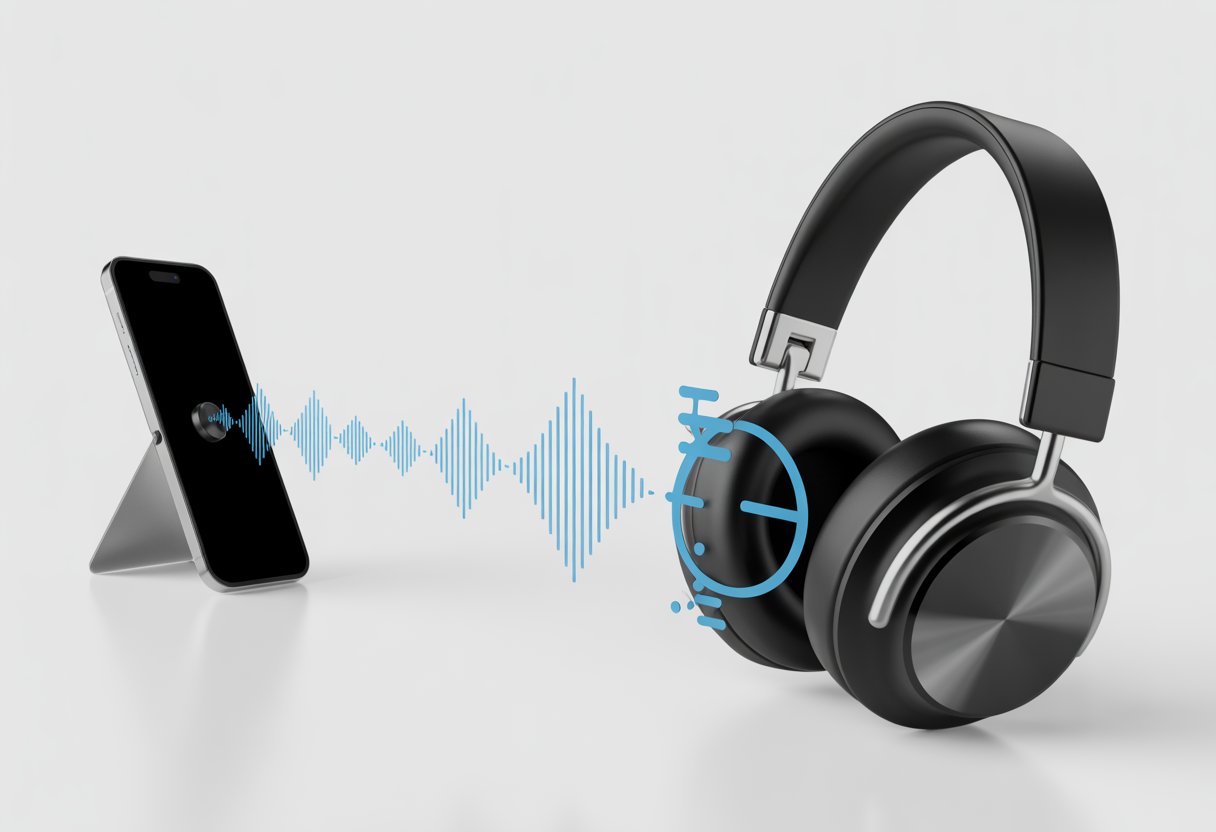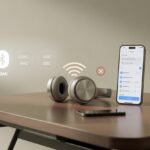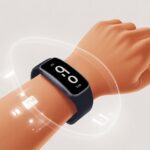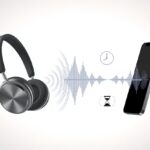Let’s be real—there’s nothing quite like watching a movie and having the sound show up late, like it’s trying to be dramatic. Most of us have experienced it: Bluetooth headphones on, the actor’s mouth moves, and the voice is playing catch-up somewhere behind.
Bluetooth headphones give us audio lag because the sound needs to get squished, shot through the air, and then put back together. That whole process just takes a bit of time.

Bluetooth isn’t exactly the speediest messenger. Encoding, transmission, and decoding all slow things down, and sometimes the apps we use try to help by delaying the video to match the sound. That can help a little, but the lag doesn’t really go away.
If you’re curious about why Bluetooth lag happens and want to figure out how to fix it, hang in there. We’re about to unravel this audio mystery.
What Causes Bluetooth Headphones To Have Audio Lag?
Bluetooth headphones sometimes test our patience with audio lag. This delay doesn’t happen because the headphones are lazy.
Let’s look at what’s really going on, how Bluetooth works, and why wired headphones always seem to stay in sync.
Bluetooth Technology and Latency
Bluetooth is handy, but it’s not built for speed. It was designed for things like keyboards, mice, and other gadgets that don’t care about lightning-fast response.
Bluetooth headphones use “audio codecs” like SBC, AAC, or aptX to shrink audio before sending it. This compression makes data easier to send, but it adds a bit of delay.
The headphones have to “decode” the signal back into music, and that adds even more time. Some newer codecs, like aptX Low Latency, help keep delay short, but both our device and headphones need to support them.
Bluetooth has improved over time, but it still can’t compete with a good old wire.
How Audio Signals Travel Over Bluetooth
When we hit play, our device compresses the audio with a codec and beams that file over the air to our Bluetooth headphones. The headphones then decode it before we can actually hear anything.
Every step—compressing, sending, and decompressing—takes a little time. These tiny pauses add up and become the lag we notice, especially when watching videos or gaming.
The system sometimes adds buffers to keep the sound steady and avoid skipping, but that can actually make lag worse. Bluetooth uses radio signals, and while most of us aren’t in a stadium, thick walls or other devices can mess with the connection.
That’s why lag sometimes gets worse if the signal is weak or there’s interference. If you want more details, Super User has a good discussion about Bluetooth audio lag.
Comparison With Wired Headphones
Wired headphones might look boring, but they’re super fast. There’s no compression, no coding, and no radio waves to slow things down.
The audio signal just zips straight from our device, through the cable, and into our ears. No fuss, no waiting.
Latency with wired headphones is so tiny that we can’t really notice it. Musicians and gamers stick with wires because even a tiny delay can throw things off.
Wired headphones also don’t get tripped up by Wi-Fi or other gadgets. If we want zero-lag audio, it’s hard to beat an old-school cord.
If you want to dig deeper into how Bluetooth stacks up against wires, PCWorld breaks it down pretty clearly.
How Codecs Influence Audio Lag
Bluetooth audio lag isn’t just here to mess with us. The codec in our headphones controls how quickly sound travels from our phone to our ears.
Some codecs are quick, some drag their feet, and some just can’t get along with certain devices.
Standard Codecs and Their Quirks
Let’s talk about the classics. The most common Bluetooth audio codecs are SBC (Subband Codec) and AAC (Advanced Audio Codec).
They work on nearly every Bluetooth device, which is nice—except they can introduce a lot of delay. SBC is the default for most headphones. It’s everywhere, but it often brings latency around 200ms or more.
That’s about the time it takes to realize the movie villain was the butler all along. AAC works well on iPhones but can lag or sound off on some Android devices.
Think of these codecs like public transit: reliable, but not always fast. For example, this blog post says “music-quality” Bluetooth audio usually means about 200ms+ of latency.
That’s enough lag to make any video look like a badly dubbed kung fu flick.
Introduction to aptX and aptX Adaptive
Now there’s aptX and its newer cousin, aptX Adaptive. These codecs try to cut down lag so our movies and games don’t feel off.
Standard aptX drops lag to about 70-80ms, which is way less annoying. aptX Adaptive goes further by adjusting its settings automatically, aiming for low latency during games or better quality for music.
It’s like having a friend who always knows what snacks to bring. These codecs keep the sound quality high, too.
But here’s the catch: both our headphones and our phone (or tablet) need to support the same version of aptX. If not, we’re stuck with the slower options.
Codec Compatibility Issues
Here’s where things get tricky. Not every device speaks the same codec language.
Even if our fancy new headphones support aptX Adaptive, nothing happens unless our phone does too. Otherwise, we’re back to SBC or AAC, and lag sneaks back in.
Codec mismatch happens more often than we’d like. Android devices usually support more codecs than iPhones, but it can still vary by brand or model.
Sometimes, the Bluetooth version matters too—older hardware might not play nice with newer codecs.
To save ourselves some hassle, checking the specs before buying is a good idea. Otherwise, we might end up with headphones that promise low latency but deliver lag instead.
You can find more on this in Reddit’s headphone discussions.
Other Factors Contributing To Bluetooth Lag
Sometimes, Bluetooth lag isn’t just about wireless headphones. Delays can come from connection strength, wandering too far from our device, or even a sneaky setting we forgot about.
Bluetooth Connection Quality
Bluetooth can be a little temperamental. If too many devices are nearby, our headphones might have to fight for a clean signal.
It’s like trying to talk at a noisy party—sometimes nobody hears us right away. We should also pay attention to Bluetooth versions.
Newer versions usually mean lower latency, but older devices can slow everything down. Just because our headphones look cool doesn’t mean they have the latest tech.
Interference causes plenty of headaches. Wi-Fi routers, microwaves, and other Bluetooth gadgets can mess with the connection.
We can test for lag by turning off other wireless stuff and seeing if things improve. For more help, check out this guide to managing Bluetooth latency.
Distance and Obstacles
Bluetooth isn’t exactly an athlete. If we wander too far from our device, the signal gets weak.
Bluetooth headphones usually work best within about 30 feet, but walls—especially thick ones—and big metal objects can shrink that range. Ever walked into another room and suddenly heard robotic sounds or silence?
That’s Bluetooth begging us to come back. The more stuff between our headphones and the device, the more lag sneaks in.
Some materials make things even worse. Brick, concrete, and metal really mess with Bluetooth signals.
If we want smooth sound, staying close to our device is the way to go.
Role of Audio Settings
Sometimes, our audio settings get in the way. If we enable audio enhancements or sound effects, the signal has to go through more processing, which can add delay.
Sample rate and bit depth settings also affect how quickly audio moves over Bluetooth. Higher quality settings might sound fancy, but they can slow things down.
If lag is driving us nuts, switching to standard settings can help. Using headphones as both a headset and audio device, especially on computers, can create extra lag.
Many guides suggest disabling headset mode to get rid of those delays. You can find more tips on this Bluetooth audio troubleshooting page.
Always double-check those audio settings—the culprit might be right there in front of us.
Best Troubleshooting Steps To Combat Audio Delay
Audio lag can turn videos and games into a weird lip-sync battle. Luckily, there are a few things we can try right now to cut down on delay and get our Bluetooth headphones back on track—before we lose our cool.
Resetting Your Bluetooth Headphones
Sometimes, headphones just need a fresh start. They can get confused after bouncing between too many devices.
Resetting them often clears up weird delays or connection hiccups. Most Bluetooth headphones have a simple reset—usually holding down a button for a few seconds.
Check the manual or the manufacturer’s website for the right steps. After resetting, we’ll need to pair our headphones again with our device.
This can fix minor bugs and get audio timing back to normal. If echoes or lag still stick around, it’s time to try something else.
Updating Firmware and Software
Outdated firmware is like trying to text on a flip phone in 2025—why make life harder? Let’s double-check that our Bluetooth headphones and whatever device we’re using both have the latest updates.
Manufacturers push out firmware updates all the time to fix audio lag and other weird glitches. Some high-end models even let us update right in their mobile app, which is pretty handy.
Don’t forget about the gadgets themselves—our computers, phones, or tablets. When we update the operating system, we often see better Bluetooth performance.
Usually, we can find update options in the settings menu or the device’s support app. For folks on Windows 10 or 11 who still notice stubborn lag, some people actually recommend switching to Linux for better audio timing. Weird, but apparently it works—see this discussion if you’re curious.
Optimizing Bluetooth Transmitter Choices
Let’s talk about something easy to overlook: the Bluetooth transmitter. That’s the gadget sending the signal from our TV, PC, or whatever device we’re using.
The quality and version of the transmitter really matter. Old transmitters tend to lag way more than new ones.
Check if the device supports Bluetooth 5.0 or higher. Newer versions handle audio better and keep latency down.
If we’re stuck with lag, adding an external Bluetooth transmitter adapter can help—especially one that supports aptX Low Latency.
When nothing else seems to work, try moving closer to the transmitter and getting rid of obstacles. Walls, microwaves, and—okay, probably not hamsters—can mess things up. For more ideas, here are some ways to minimize Bluetooth audio lag.
Pro Tips To Reduce Latency And Boost Audio Quality
Nobody enjoys watching lips move out of sync with the sound. Getting better audio quality and less lag is totally doable.
We just have to be a bit clever (and sometimes, maybe a little old-school).
Selecting Low-Latency Equipment
Let’s chat about gear for a second. Not every pair of Bluetooth headphones is up for the job—some keep up, while others lag behind like that friend who’s always running late.
Look for headphones and devices that support low-latency Bluetooth codecs. Watch for words like aptX Low Latency or AAC on the box or in the specs.
These codecs help shrink latency and give us smoother, snappier sound. If there’s a setting for it, turn it on.
Here’s what really helps:
- Make sure both the device and headphones support the same low-latency codec.
- Keep Bluetooth drivers and firmware up to date to dodge most issues.
- Try to avoid using Bluetooth in super crowded areas—too much wireless traffic just adds more lag.
If you want to dive deeper, here’s a guide on minimizing Bluetooth audio lag.
Using a Headphone Cable—Yes, Really
Yeah, cables are a throwback, but sometimes desperate times call for classic solutions. Plugging in a headphone cable can instantly fix lag.
Wired connections have almost zero delay, so what we hear actually lines up with what we see. This comes in clutch if we’re watching videos, gaming, or just want that perfect sync.
Most Bluetooth headphones include a backup cable, usually buried in the box somewhere. When Bluetooth lag gets on our nerves, we can just grab that cord and plug in for instant sound.
It’s not the coolest look, but hey, it works. Plus, using a cable saves battery on both the headphones and the device.
Sound quality often gets a boost too, since we’re not dealing with compressed Bluetooth audio. It’s a little retro, but honestly, it gets the job done.
When Your Microphone Makes Things Worse
Bluetooth headphones have a way of surprising us—just when everything’s fine, the microphone decides to mess things up.
Sharing bandwidth between our ears and our voice can create some real problems.
Bluetooth Calls Versus Music Playback
Jumping on a call? Suddenly, the headphones switch modes to handle both listening and speaking.
This switch usually brings extra lag and a hit to sound quality. Some headphones drop the audio quality to make room for the mic.
Sometimes, music goes from rich stereo down to something that sounds like a scratchy AM radio. This happens because Bluetooth headsets have limited audio channels.
Here’s a quick comparison:
| Activity | Audio Quality | Microphone Active | Lag |
|---|---|---|---|
| Music Playback | High | No | Low |
| Phone/Video Calls | Lower | Yes | Higher |
Bluetooth’s bandwidth is a big part of the problem, not just the headphones.
Multipoint Connections and Trade-Offs
Let’s say you want to get fancy and hook up your headphones to more than one device at the same time. With multipoint connections, your headphones have to juggle signals from, say, your laptop and your phone.
It sounds cool in theory, right? But honestly, this can confuse both your headphones and your ears.
The moment the microphone jumps in, your headphones might drop audio quality just to keep things working. Ever notice your music cut out or lag when an app suddenly grabs the mic or a notification pops up?
If you add more devices, the microphone keeps scrambling for space on the Bluetooth channel. Delays get worse, and sometimes the sound just goes weird or muffled right in the middle of a chat.
It’s kind of like inviting too many people to a group call—nobody’s thrilled, especially not your Bluetooth mic. Multipoint gives you convenience, sure, but you’ll probably run into lag or uneven sound along the way.
- Why is my fitness tracker not pairing with Apple Health? Troubleshooting for Technologically Cursed Mortals - December 22, 2025
- Why is my fitness tracker not updating firmware? Tech Tantrums and Update Woes Explained - December 21, 2025
- Why is the Sound Quality on My Bluetooth Headphones Poor? It’s Not Just Bad Music Taste! - December 21, 2025






